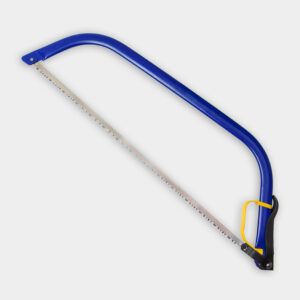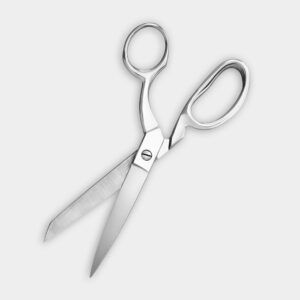We may be compensated if you purchase through links on our website. Our team is committed to delivering honest, objective, and independent reviews on home products and services.
Project details
Skill
Cost
Estimated Time
Building a soccer goal for your backyard is an excellent way to encourage outdoor play and help budding athletes hone their skills. With some basic materials and a few hours of work, you can create a sturdy, lightweight goal that’s perfect for family fun or solo practice. This Old House expert Richard Trethewey demonstrates how to construct a PVC pipe soccer goal that’s both durable and easy to assemble.
Soccer Goal Materials and Tools Needed
Before you begin, gather the following materials and tools:
- PVC pipes (four 10-foot lengths)
- PVC elbows and tees
- PVC pipe cement
- Deer netting
- Zip ties
- Hacksaw
- Tape measure
- Permanent marker
- 80-grit sandpaper
- Utility scissors
Overview of Building a Soccer Goal
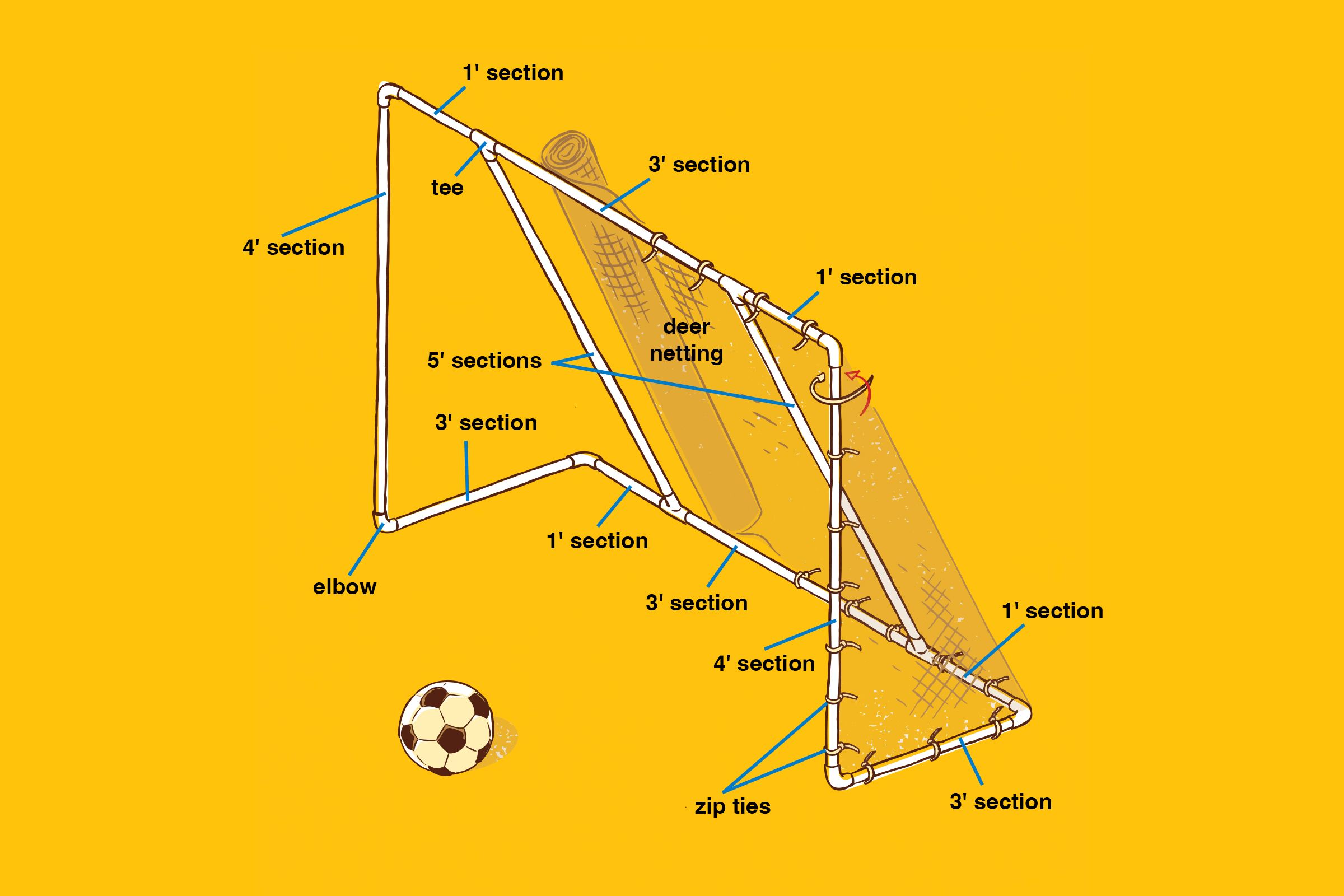
The goal shown here is a three-dimensional triangle made from PVC plumbing pipes wrapped in deer netting. While the instructions are for a 4-by-5-foot goal, you can adapt the measurements to make your goal any size you want.
Cutting and assembling the sections of pipe are so simple and safe that kids can help at every step. It’s easy to cut through the plastic pipes and assemble the 22 PVC pieces like a giant puzzle. Have a parent supervise the gluing stage, as the short time you have to adjust the pipes before the glue sets means working quickly. Deer netting, a strong but supple mesh, is an inexpensive alternative to a rope net, and it attaches easily to the pipes with common zip ties.
Step 1: Lay Out the PVC Frame Pieces
Using a tape measure, divide the four 10-foot lengths of PVC pipe into the sections needed to assemble the goal frame and mark one section of each length for cutting. You’ll need two 5-foot sections, two 4-foot sections, four 3-foot sections, and four 1-foot sections.
Step 2: Cut the Pipe

Lay a marked-up pipe on a worktable, with your first cut mark hanging off the edge. Cut the pipe at the mark with a hacksaw. Use your first cut piece as a guide for the others—that way, they’ll all be the same length. Continue until all the pieces are cut. You should be left with one unused 6-foot piece. Using 80-grit sandpaper, smooth out the cut ends of the pipes so that there are no sharp edges or burrs.
Step 3: Dry-Fit the Frame
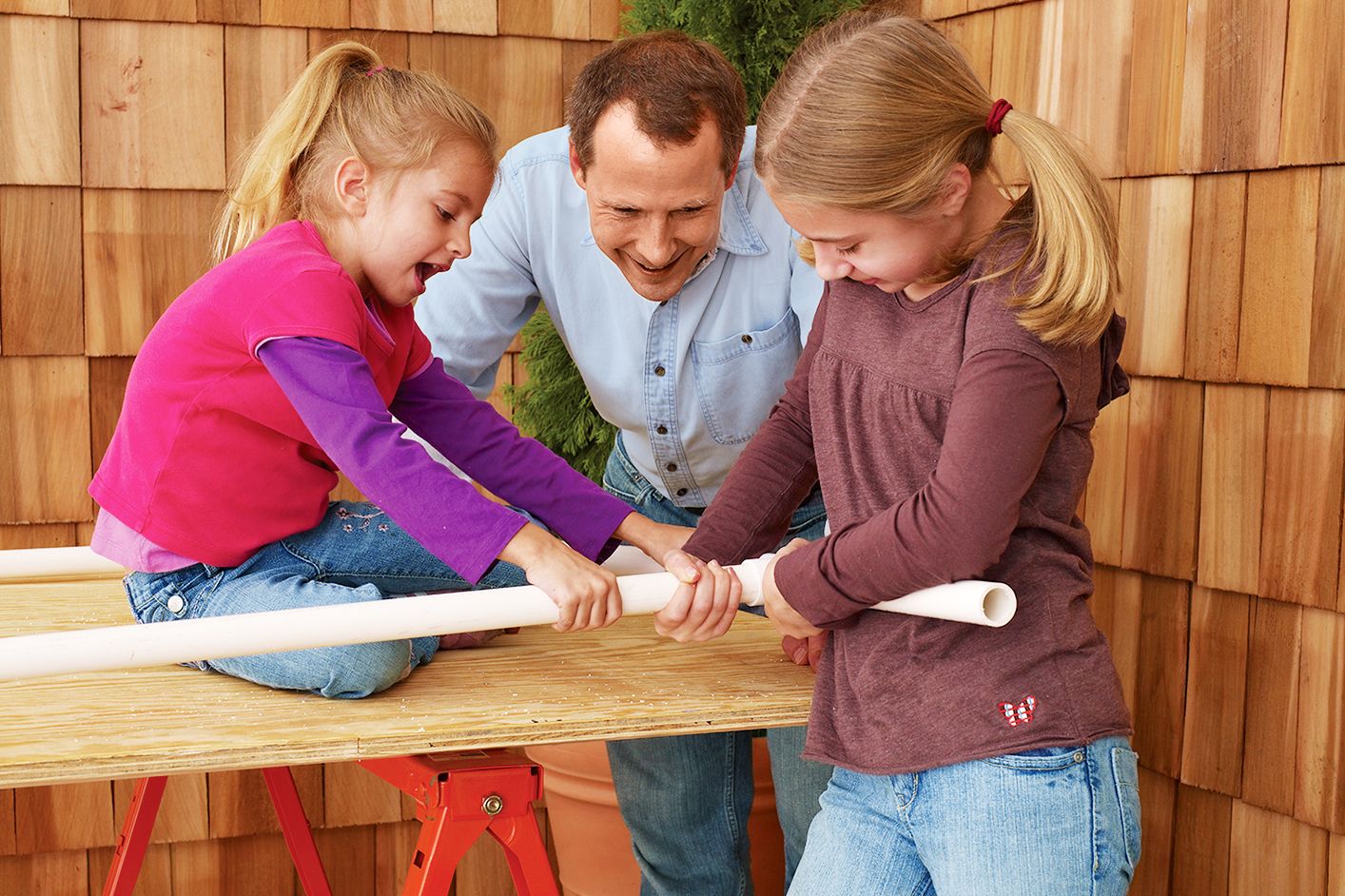
Before you apply the glue and assemble the goal permanently, you will need to dry-fit the pieces together. This will ensure that the sections of pipe fit together and the goal is straight.
Begin with the base. Make the two corners by attaching a 1-foot section to a 3-foot section, using an elbow. Lay these down facing each other. Put tees on the other ends of the 1-foot sections. Then, connect the two tees with a 3-foot section.
To make the top of the goal, repeat the steps above, except attach the 1-foot sections to 4-foot sections at the elbows.
Attach elbows to the short sides of the base, and turn them so that they face upward. Stand the top of the goal up, and insert the bottom of the 4-foot sections into the elbows. You should now have an L-shaped frame.
Finally, connect the top and base tees with 5-foot sections that act as brace pieces.
Step 4: Keep Track of the Connections
Using a permanent marker, draw a line across the adjoining parts at every connection. This will help you line up the pipes once you glue them and put the goal back together before the PVC cement has a chance to dry.
Step 5: Glue the Frame Together
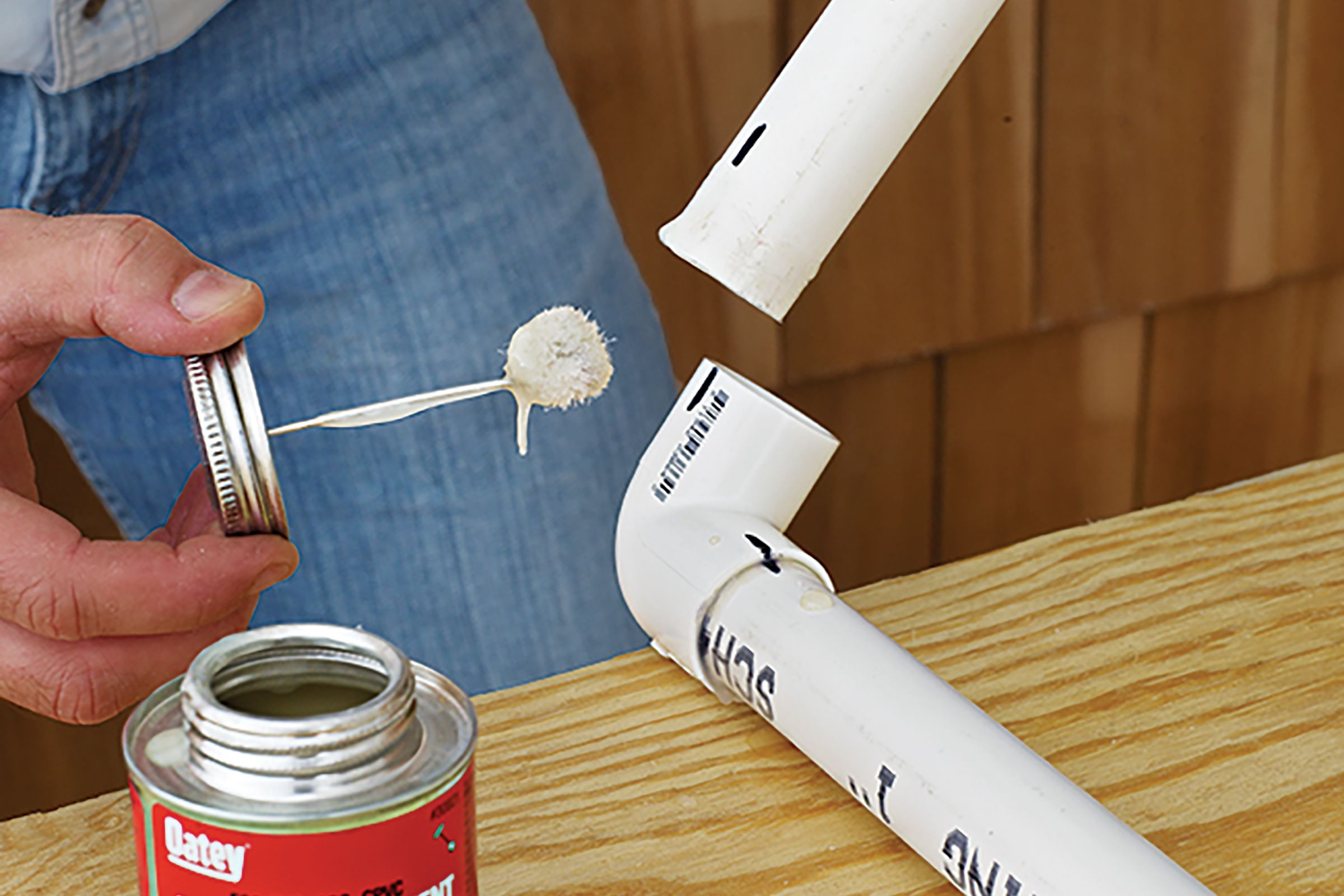
Take apart one of the joints. Wipe PVC pipe cement on the outside of the pipe and the inside of the connector, then fit the two back together. Quickly line up your marks and hold the fittings in place. Pipe cement sets in seconds, so you don’t have much time. Continue to take apart each joint, apply the pipe cement, and put it back together in this manner until the entire frame is glued up.
PVC pipe cement has a strong odor, so get one labeled low-VOC, and do this step in a well-ventilated area.
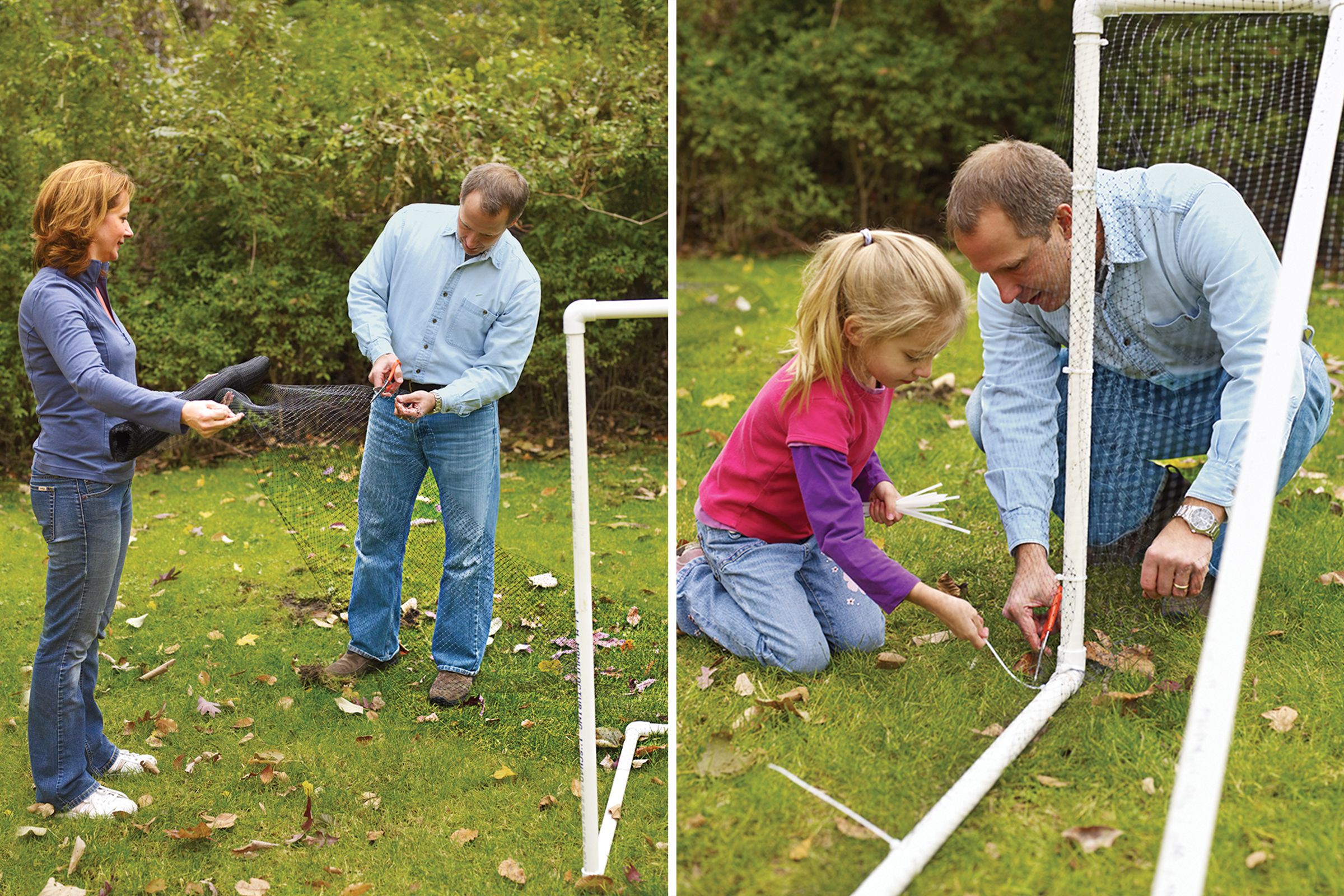
Step 6: Attach the Net
Take the soccer goal outside. Unroll the deer netting and measure out enough to cover the back and sides of the goal. Using utility scissors, cut the netting to size, leaving a little extra for overhang.
Wrap the netting around the goalposts, leaving it a little loose so that it catches a soccer ball without tearing. Then, feed zip ties through the netting and around the pipes, connecting the ties and pulling them tight. Do this every few inches until all the netting is attached. Using utility scissors, snip off the long ends of the ties and turn the joints to the back so that they’re hard to see.
Using utility scissors, trim off the excess netting around the front and bottom of the goal.
Step 7: Hold Down the Goal
You can use small sandbags in the corners of the goal to hold it down. Grab some players, start a game, and see how long it takes for you to score your first goal.
Variations and Upgrades
Once you’ve mastered the basic design, consider these variations:
- Add wheels to the base for easier mobility.
- Adjust the size for different age groups or playing styles.
- Install a backstop behind the goal to catch missed shots.
- Use heavier-duty PVC for increased durability.
These upgrades can enhance your soccer goal’s functionality and longevity. For instance, installing wheels makes it easier to move the goal for mowing the lawn or changing its location.
Maintenance and Care
Regular maintenance will ensure that your soccer goal remains in good shape for years to come. Be proactive about inspecting the structure to catch minor wear and tear before it turns into a bigger issue. To keep your homemade soccer goal in top condition, follow the steps below:
- Clean the PVC frame occasionally with mild soap and water.
- Regularly check and tighten zip ties as needed.
- Replace the netting if it becomes worn or damaged.
- Store the goal in a protected area during harsh weather conditions.
Safety Considerations
While a DIY soccer goal is generally safe, ensure it’s properly anchored to prevent tipping and regularly inspect the frame for cracks or damage. Supervise young children during play, and make sure they avoid hanging or climbing on the goal to prevent accidents.
